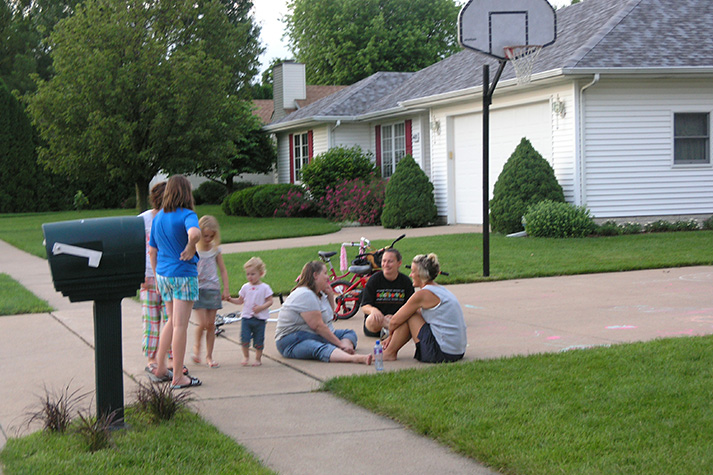Darrin Nordahl, formerly design director of Davenport, Iowa, is the author of the books My Kind of Transit (2009), Public Produce (2009), and Making Transit Fun (2012).
What’s the most exciting suburb you’ve been to lately? Is there such a thing as a “destination suburb”?
Darrin Nordahl: Without naming any names, I find that many inner-ring suburbs – and subdivisions within the city built about the 1930s – hit the “sweet spot.” The homes are mostly detached, but lots are small and the streets are skinny, so you can achieve densities of five homes per acre (compared to the new subdivisions that average 2.2). At that density, you can support streetcars and corner stores, and neighborhood parks tend to be more active. Being a parent of a bunch of kids, I like that.
A few years ago, in Planning magazine, you proposed a number of small “tweaks” to the standard subdivision to make it more livable. How far can incremental changes go to improve suburbs?
Nordahl: Quite far. For one thing, developers don’t like to build those extra-wide streets – it costs them money and it reduces the amount of land to be sold – but many municipalities require it. I think four tweaks can make a real difference, especially when you put them together:
One, allow narrower streets. In Davenport, the code required 28 feet from curb to curb, but the engineers would come out and talk to the developer and say, yeah, but we really prefer 36.
Two, have smaller lots. The two-story house with a two-car garage is the dominant type now, but if you limit the parcel size, you can get close to four homes per acre.
Three, include multi-unit housing — fourplexes, sixplexes, and eightplexes, nothing larger – and put them on the corners, which they can address better than a single-family dwelling anyway.
Four, plant trees! They may not help with density, but they make everything more attractive.
These four things together can get us close to that classic 1930s level where more activity and more transit can work for the neighborhood.
You’ve spoken and written about making transit more attractive. But have we reached a point where we are wedded to having our own space, traveling with whomever we choose, and arriving when we want to, so that we won’t go back unless we have to?
Nordahl: As long as driving is easy and is perceived as cheap, transit will have a tough time. But while nobody wants to get on a bus full of strangers, they do enjoy going to cafes full of strangers. Why is that? A reader commented on the picture in one of my books [showing] the inside of a San Francisco street car: “It looks like the bar in ‘Cheers’!” So you can create a far different social situation on a bus with different design.
This is what I find compelling about the conservatives’ case for transit. They say, people won’t vote taxes for transit that they can’t see themselves riding. You can’t browbeat people into riding because it’s better for the community or the environment or because it’s “the right thing to do.” People shop at Wal-Mart, they go to Las Vegas, they like Disneyland, even though most urbanists don’t like any of those things. We have to find what those places are giving people and apply that – in other words, make transit cool.
New Urbanist designers love front porches. You’re partial to driveways. In terms of creating community, what’s the difference?
Nordahl: I see porches as semi-private places, where you would feel uncomfortable if not invited in. Driveways on the other hand are semi-public, where no one will look at you askance if you step in and join a conversation. And it’s kids that help make a space. They aren’t so crazy about front porches; in the driveway they can do chalk drawings, learn to ride bikes, play games, and that just draws people in.


BE PART OF THE CONVERSATION
Follow @betterburb